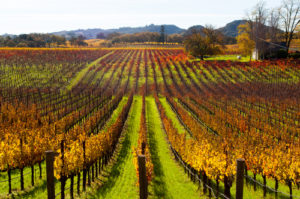People often ask us, “What’s the difference between your Napa and Sonoma
winery tours?” Here are some quick insights on the flavor and charm of
each valley.
Similarities between the two wine regions
Napa and Sonoma valleys run adjacent and parallel to one another, separated by the Mayacamas, a small mountain range. They are similar in many ways, with beautiful rolling hills, expansive vistas, vineyards and wineries scattered throughout.
While similar in geography and climate, Napa tends to be warmer than Sonoma as it is further inland. Both valleys, named for the counties where they are located, are known worldwide for producing fine quality wines.
What makes each valley unique
Napa was the first established California wine region, and for this reason, may be more well known. More commercialized and developed than Sonoma, Napa has become a destination for visitors looking for luxury accommodations and dining.
Most of the wineries in Napa are centralized in the heart of the Valley, while in Sonoma they tend to be more scattered. Sonoma has a more rural feel and visitors enjoy an off-the-beaten-path experience with many hidden gems waiting to be found.
What a difference terroir makes
Terroir — the geology, soil types and climate — differs between the Napa and Sonoma valleys, making each especially suited for growing certain grapes. For example, “cab is king” in Napa, as cabernet grapes grow particularly well in many of its appellations, or defined regions of the Valley. Sonoma is ideal for grapes that like a slightly cooler climate, such as chardonnay and pinot noir.
For more in-depth information and to experience the flavors of California’s legendary wine country, join us for one of our tours, featuring three boutique family-owned wineries.
Learn about:
Napa Valley wine tour
Sonoma Valley wine tour
Combo Napa / Sonoma tour




